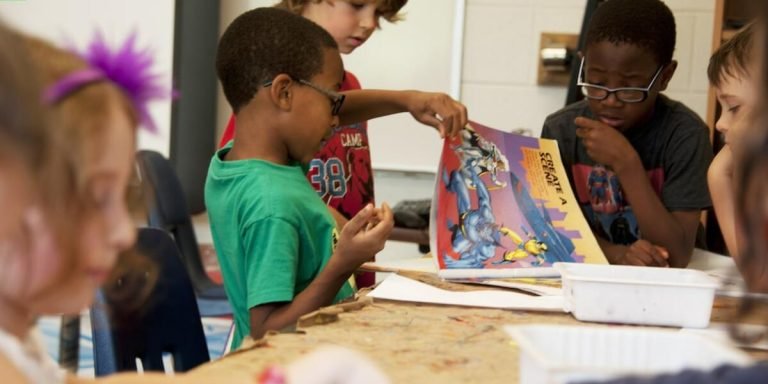SEL Curriculum Middle School: Nurturing Emotional Intelligence in Adolescents
Understanding the emotional growth of your child is equally as crucial as tracking their academic progress, particularly during adolescence. Implementing a Social-Emotional Learning (SEL) curriculum in middle school can play an indispensable role in nurturing emotional intelligence at this critical age. With it, you empower students to comprehend and manage emotions, set positive goals and make responsible decisions.
Adolescence is a phase where young minds need more than just textbook knowledge; they require life skills that contribute significantly towards shaping their future. SEL curriculum for middle schools provides adolescents with these necessary tools by focusing on interpersonal skill development whilst boosting self-awareness and empathy amongst peers – all of which are vital aspects ingrained within successful individuals today.
Did you know?
Did you know that according to CASEL (Collaborative for Academic, Social and Emotional Learning), an effective SEL program can increase students’ academic performance by 11 percentile points? This just shows how nurturing emotional intelligence in middle school is not only beneficial for personal growth but also acadically.
Unveiling the Core Components of an SEL Curriculum for Middle Schoolers
The integration of technology in education has gained significance over the years, especially when it comes to navigating Social-Emotional Learning (SEL) for middle schoolers. One focal point is an SEL curriculum designed specifically for these young minds brimming with curiosity and potentiality. Embracing this tailored approach ensures a well-rounded development that goes beyond mere academic prowess.
A robust SEL curriculum invariably focuses on building five key competencies among students: self-awareness, social awareness, responsible decision-making skills, relationship management techniques and self-management abilities. These components are thoughtfully intertwined within the digital learning tools used at schools today. In essence, technology forms the backbone underpinning all facets of an insightful SLE curriculum targeting middle school pupils.
For instance,, interactive applications enhance their understanding of emotions by illustrating various scenarios and responses – a practical way to build upon empathy or impulse control lessons from textbooks alone . It’s also worth mentioning how such tech-savvy methods promote home-school partnerships as parents have instant access to child’s learning progress through real-time updates provided via apps or websites – facilitating more meaningful conversations about student growth both academically & emotionally between educators & guardians alike .
In conclusion , given its essential role as catalyst in executing effective SEL programs aimed towards contemporary youth population , leveraging cutting edge tech solutions remains non-negotiable aspect while designing curricula meant for nurturing socially-emotionally competent future citizens starting right from their crucial formative years spent at Middle School campuses across globe .
Exploring Social Awareness and Relationship Skills
Middle school is a crucial phase where students delve deeper into the world of interpersonal relationships. It’s at this stage that they begin understanding and responding to social cues, empathizing with their peers’ feelings, and making responsible decisions based on these interactions.
One key component in any effective SEL curriculum for middle schoolers is the development of Social Awareness. This entails teaching pupils how to recognize and respect others’ perspectives from diverse cultural backgrounds apart from their own. By incorporating lessons about empathy, compassion towards other cultures or religions can be fostered which strengthens children’s sense of belongingness within multi-cultural society.
Modern SEL curricula also emphasize actively teaching tolerance as part of promoting social awareness by encouraging kids to put themselves in another person’s shoes before judging actions or attitudes. In 2023, innovative tools like VR headsets are utilized giving students immersive experiences exposing them first-hand various societal challenges people face helping develop open-minded approach.
Identifying Self-Management Techniques in Classroom Settings
When it comes to a middle schooler’s education in 2023, integrating an SEL (Social and Emotional Learning) curriculum has become paramount. As we dive deeper into the core components of this curriculum under the subheading “Unveiling the Core Components of an SEL Curriculum for Middle Schoolers”, let’s focus on one crucial aspect — identifying self-management techniques in classroom settings.
Teaching students about emotional regulation goes hand-in-hand with their academic lessons. A key part of any sel curriculum middle school should include activities that help students identify emotional triggers and teach them coping mechanisms such as deep breathing exercises or taking short breaks from stressful tasks—a process known as cognitive restructuring.
Beyond emotions, time management forms another significant component here. Interactive project timelines could serve well through digital platforms—teaching children not just about deadlines but also about pacing themselves effectively across various tasks they undertake.
Finally, goal setting completes this trifecta perfectly by giving students something tangible to strive towards daily—academically or personally—which helps enhance overall motivation levels too!
Integrating SEL into Middle School Academics and Activities
In today’s educational landscape, integrating Social and Emotional Learning (SEL) into middle school academics has taken precedence. This shift can be attributed to the growing acknowledgement of SEL as a vital component in nurturing well-rounded adolescents ready to face life’s challenges beyond just bookish knowledge. The integration usually involves incorporating aspects like understanding emotions, empathy for others, maintaining positive relationships and handling challenging situations resourcefully.
Education technology or EdTech is paving ways towards achieving this goal effectively within the middle school set up. Many innovative platforms are enabling teachers to not only enrich their classroom interactions but also apply SEL principles seamlessly throughout academic activities. For instance — digital games designed on concepts that promote teamwork help students enhance cooperation skills while covering regular curriculum materials such as math problems or historical events.
The effective confluence of technology with education provides an engaging learning environment where every student gets an opportunity for personal growth along with intellectual development. Facilitating participatory learning using interactive software applications encourages hands-on experiences promoting problem-solving skills among young minds—an essential aspect often missed out during traditional chalk-and-board style teachings.
Hence, infusing SEL enriched by advanced technologies into typical middle-school curricula fosters emotionally resilient individuals capable of deep critical thinking—a much-needed attribute in our increasingly complex society.
Strategies for Infusing Emotional Intelligence into Lesson Plans
Incorporate emotional intelligence into lesson plans as part of the SEL (Social and Emotional Learning) curriculum in middle school with these effective strategies:
1. **Bring Real-World Examples:** Use everyday situations and current events to explain complex emotions or interpersonal skills. This will not just make lessons relatable but also help students understand concepts better.
2. **Employ Technology Solutions:** As we roll deeper into 2023, technology continues reshaping education trends; don’t hesitate using it for your advantage! Using gamified learning apps designed around SEL principles is one way to integrate tech while teaching emotional intelligence.
3. **Collaborative Projects:** Encourage group activities where kids can learn practical applications of empathy, leadership and cooperation — all critical components of an effective SEL curriculum in middle schools nationwide.
4.Seize Teachable Moments: Often spontaneous incidents become the best source of imparting wisdom about coping mechanisms under different circumstances leading toward greater resilience amongst students.
5.Peer Mediation & Role-playing Techniques: Initiatives like peer-led conflict resolutions give emphasize on core social-emotional competence by enhancing problem-solving abilities through role-play exercises.
Creating a Supportive Environment through Extracurriculars
The first step towards creating a supportive environment through extracurriculars involves understanding what these pursuits entail in terms of their unique demands and opportunities. These can range from team sports, drama clubs, art classes to debate societies.
When it comes to physical education or any other sport-based activity, teamwork and collaboration are vital elements that aid effective SEL integration. Emphasizing on principles like respect for others’ abilities, fair play and shared responsibility promotes healthy interpersonal relations among students.
Artistic endeavors such as participating in drama clubs or painting workshops offer creative outlets where children can express themselves freely while also learning about empathy and emotional awareness – two crucial components of every good sel curriculum middle school must focus on.
For intensifying critical thinking skills along with fostering respectful communication habits – participation in debate societies could be invaluable.
Participation prepares students well ahead for career paths requiring problem solving capacity combined with perseverance which form key ingredients necessary during adult life’s practical scenarios later-on.
Measuring the Impact of SEL Implementation in Middle Schools
Measuring the impact of Social-Emotional Learning (SEL) curriculum implementation in middle schools has evolved significantly, especially with today’s advancing technology. Recent studies reveal that integrating SEL into a school’s daily schedule not only promotes overall student well-being but also boosts academic performance. As we dive deeper into this era of digital learning, it is essential to gauge how effectively our education system aligns its strategies with both youth development and technological advancements.
In 2023, we see more educators marrying technology with SEL curriculum for middle school students—a concept known as ‘Technology Integration’. This innovative method seeks to foster emotional intelligence while equipping young minds for the tech-dominated future workforce. Through interactive platforms and virtual reality experiences—students are exposed to scenarios designed to cultivate empathy, resilience, decision-making skills amongst others—all from within their digitally enhanced classrooms.
However measuring the success of these initiatives can be challenging without relevant metrics or parameters in place. Tools like advanced data analytics now enable us at an unprecedented level understand precisely what elements engage students most effectively; spotlighting previously unseen correlations between key areas such as classroom environment adjustments and improved outcomes in mental health or academia. Technology truly empowers us by revealing real-time insights on current practices sowing fertile grounds for innovation and advancement.
Assessing Behavioral Changes Post-Curriculum Adoption
One significant area where the impact of a SEL (Social and Emotional Learning) curriculum in middle school becomes apparent is in assessing behavioral changes among students post-curriculum adoption. It’s crucial to track these changes meticulously, as it can provide essential feedback on the effectiveness of your implemented strategies.
To begin with, implementing an effective SEL program involves introducing structured activities designed to foster emotional intelligence and interpersonal skills. These initiatives are targeted at enriching a student’s abilities to understand their emotions better and manage them more efficiently; but also includes teaching empathy, teamwork, leadership skills, problem-solving ability etc., all integral components for success both inside & outside academic environments.
1. Have there been marked reductions in disciplinary issues?
4.Do teachers report that students seem happier or emotionally well balanced?
Technology Integration proves instrumental here by providing tools such as data collection softwares which makes it easier than ever before to record specific incidents related directly back towards implementation measures taken – hence enabling accurately measure results against initial objectives set forth when first adopting new methodologies.
Tracking Academic Performance Linked to Social-Emotional Growth
The implementation of SEL (Social and Emotional Learning) curriculum in middle schools is designed to equip students with the essential social and emotional skills. Consequently, tracking academic performance linked to their respective social-emotional growth becomes a crucial element.
Begin by understanding that it’s not only cognitive intelligence contributing solely towards successful academics. The integration of an effective sel curriculum in middle school can boost collaboration, empathy, decision-making abilities among children; invaluable life skills which reflect significantly on their studies as well.
Academic accomplishments aren’t merely numbers but also embody these softer aspects developed through engaging SEL programs. Hence measuring this impact involves considering facets beyond just test scores or grades while linking them back to the ongoing personal development process experienced by each student.
Integrating technology into education has leveled up traditional teaching methods making this evaluation more productive and insightful than ever before. 2023 offers various technological tools capable of helping educators track both academic performances connected intimately with corresponding socio-emotional progressions within students undergoing dedicated SEL curriculums.
Digital platforms now enable regular monitoring via analytics blended seamlessly into daily lessons providing immediate feedback for any necessary adjustments ensuring optimization along the journey’s length.
Moreover, interactive apps specifically built around evaluating emotional resilience and interpersonal relationships capabilities have shown positive impacts on studying patterns beside standard testing metrics.
Conclusion
Understanding and implementing an SEL curriculum in middle school can be challenging but incredibly rewarding. It fosters not only the development of academic skills, but also those vital life skills that are foundational to navigating adulthood. As they say – it’s more than just what you learn from books, it’s about moulding emotionally intelligent individuals ready for the world.
We encourage you to explore our website further for in-depth information on childhood education methodologies, special initiatives, educational games and a host of other resources tailored specifically for parents and educators alike. Knowledge is power indeed! Empower yourselves with comprehensive guidelines that would help create enriched learning environments at home or within your classroom walls; because every child deserves nothing less than excellence when it comes to their growth journey.







